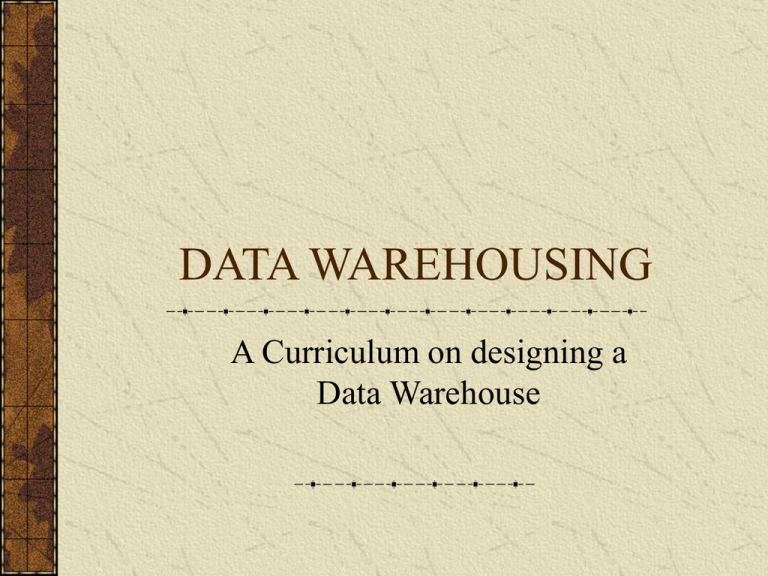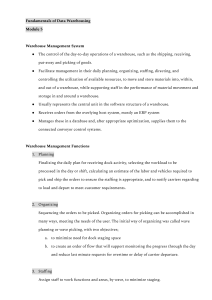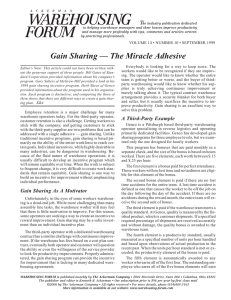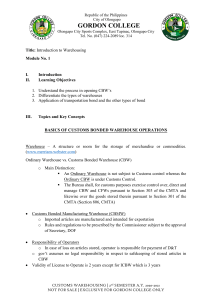PowerPoint Presentation - Introduction to Data Warehousing
advertisement

DATA WAREHOUSING A Curriculum on designing a Data Warehouse What is a data warehouse? A database filled with large volumes of cross-indexed historical business information that users can access with various query tools. The warehouse usually resides on its own server and is separate from the transactionprocessing or “runthe-business” systems. Benefits of a data warehouse Intended to provide an architectural model for the flow of data from operational systems to decision support systems DW involves a many record analysis, during which all data has to be locked Used to discover trends and patterns Present opportunities Identify problems Design considerations Database structure Normalized design vs. star schema Tradeoff between flexibility and performance Metadata Keeps data warehouse uniform and updates possible International company? Integrating the catalog into back-office functions Simplifying the maintenance that merchants must manage in regard to both presentation and back-office integration Making an interface easy to navigate for new visitors Cio.com (designing principles) Strategic Use Strategic planning provides Direction Focus Perseverance Flexibility Strategic planning is used to create Sustainable Competitive Advantage Data Warehousing provides competitive advantage in the battle against time Past - learning from mistakes Present – allows for maneuverability Future – leaders can act on foresight Data warehouse Development Lifecycle Iterative process (Rapid application Development) Produces a working prototype that is retained and improved upon, rather than discarded Kelly, DW in action Keys to success Create data model Know the user’s desires/requirements Build small and smart with iterations Common data definitions Patience! Cio.com (blueprint for success) Performance measurement Database familiarity Tools selection Developer’s angle Cost/benefit of data warehouses New insights into Customer habits Developing new products Selling more products Cost savings and revenue increases Cross-selling of products Less mainframe computer storage Identify and target most profitable customers Capital outlay and development/training time can be extraordinary. In 1997, companies spent an average of $1.9 million on DW projects Quality of system output Levels of risk Intangibles Cio.com (middle ground) How to avoid failure: 30-50% failure rate! Lack of executive support Poor management Unrealistic expectations Lack of user demand Lack of business objective Unstructured user interviews Poor data model Where is source data?











